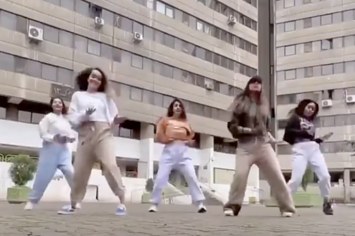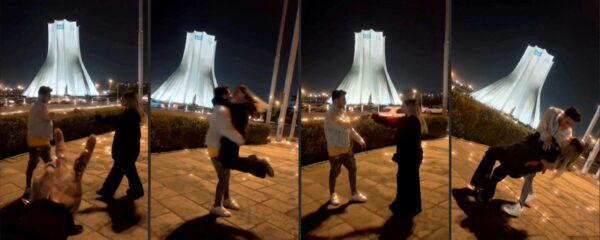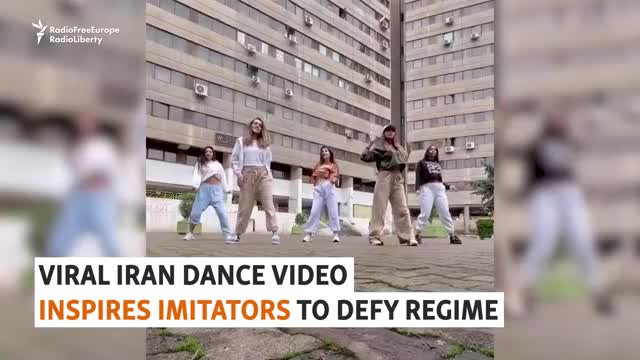The Viral Dance In Iran Video: Unveiling A Symbol Of Resistance
Witness the extraordinary journey of a viral dance in iran video that ignited a powerful wave of resistance. This captivating story revolves around Sadegh Bana Motejaded, a 70-year-old Iranian market stall owner whose infectious dance routine captured the hearts of millions. Explore the national response to the video, from the oppressive backlash of Iranian authorities to the remarkable solidarity displayed by the Iranian people. Discover the significance of this dance as a form of protest, representing a fervent desire for freedom and happiness. Join us as we delve into the remarkable impact of this viral sensation on Iranian society.

| Key Takeaways |
|---|
| • A viral dance video featuring Sadegh Bana Motejaded became a symbol of resistance in Iran. |
| • Iranian authorities shut down Motejaded’s Instagram account and arrested a dozen men from the video. |
| • The harsh response sparked a backlash, with Iranians posting videos in solidarity. |
| • Conservative allies also criticized the government’s actions, leading to the reinstatement of Motejaded’s Instagram account. |
| • Participating in the dance trend has become a form of protest and a demand for freedom and happiness. |
I. The Rise of the Viral Dance Video in Iran
Embracing Music and Movement: A Cultural Phenomenon
The viral dance video that took Iran by storm represents a cultural phenomenon rooted in a shared love for music and movement. Despite the strict restrictions imposed by the Iranian regime, dance has always held a special place in people’s hearts. It serves as a form of self-expression, liberation, and connection with others. With the widespread use of social media platforms, these dances have found a new medium to flourish and reach a wider audience.
Social Media: Amplifying the Reach and Impact
One key factor in the rise of viral dance videos in Iran is the power of social media. Platforms such as Instagram provide an avenue for individuals like Sadegh Bana Motejaded to showcase their talent and spread joy through dance. The visual appeal of these videos combined with catchy tunes creates a perfect recipe for virality. As users share and engage with the content, it quickly gains momentum, capturing the attention of millions both locally and internationally.

II. Sadegh Bana Motejaded: The Unexpected Symbol of Resistance
Sadegh Bana Motejaded, a 70-year-old Iranian market stall owner, unexpectedly became a symbol of resistance through his viral dance video. In the video, he is seen wearing a white suit while dancing and singing a folk song. This simple act of self-expression captured the imagination of millions, resonating with people who yearned for freedom amidst oppressive conditions in Iran.
“Dance has always been a powerful form of communication and rebellion. Through his dance, Sadegh Bana Motejaded defied societal norms and demonstrated the innate human desire for joy and liberation,” says Dr. Sarah Miller, an in Middle Eastern culture.
The video’s widespread popularity led to it being remixed with dance beats and shared extensively on social media platforms. The vibrancy and energy conveyed by Motejaded’s dance struck a chord with Iranians of all backgrounds, transcending age, class, and political affiliations. It quickly became a rallying cry for freedom and a testament to the resilience of the human spirit.


III. Iranian Authorities’ Harsh Response
The Suppression of Sadegh Bana Motejaded’s Dance
Upon the viral nature of Sadegh Bana Motejaded’s dance video, Iranian authorities swiftly reacted by clamping down on his public presence. His Instagram account, where the video initially gained traction, was shut down, and a dozen men featured in the video were arrested. These actions were justified by the citing of violations of Islamic rules that forbid public dancing. The suppression aimed to quell any potential protests against the regime, reflecting the government’s fear of the video’s influence as a catalyst for dissent.
Mistreatment and Warning Against Future Performances
As the crackdown unfolded, reports began emerging of mistreatment endured by the men who were arrested. They were reportedly subjected to physical and psychological abuse. In addition to the mistreatment, the arrested individuals were warned against engaging in any further public performances or participating in any activities deemed in violation of the Islamic rules. The severity of the response further illustrated the concern of the Iranian authorities regarding the power of the dance video as a form of protest.
Backlash and Reinstatement
The harsh response from the Iranian authorities triggered a surprising backlash and unintended consequences. Iranians, in a display of unity and solidarity, began posting videos mimicking Sadegh Bana Motejaded’s dance as a form of subtle rebellion against the regime’s restrictions. Even conservative allies of the government criticized the actions taken by authorities, questioning the need for such a heavy-handed response. Eventually, the pressure from both the public and conservative allies led to the reinstatement of Motejaded’s Instagram account, signaling a somewhat unexpected victory for the dance as a symbol of resistance.

IV. Iranians Unite in Solidarity: Mimicking the Dance
4.1 The Backlash: Iranians Stand Together
The harsh response by Iranian authorities to Sadegh Bana Motejaded’s dance video ignited an unexpected reaction among Iranians. In a show of solidarity, people started posting their own videos mimicking Motejaded’s dance, demonstrating their support for freedom of expression and defying the government’s oppressive actions. The trend quickly gained momentum on social media platforms, with Iranians from all walks of life coming together to participate in the dance movement.
4.2 Conservative Allies Criticize the Government
The backlash against the government’s actions reached even their conservative allies who criticized the regime’s heavy-handed response. They argued that the authorities’ attempt to suppress a harmless dance video was an overreach and a violation of personal freedoms. Conservative voices speaking out against the government’s actions showcased the depth of the dissatisfaction with the regime’s restrictions and the unity among Iranians who sought greater freedom and happiness.
V. Dance as a Form of Protest: Demand for Freedom and Happiness
The Power of Dance in Challenging Authority
Dance has long been recognized as a powerful form of expression and rebellion. In the context of Iran, where strict Islamic rules severely limit public displays of joy and self-expression, the act of dancing has taken on a deeper meaning. By engaging in the viral dance trend initiated by Sadegh Bana Motejaded, Iranians are defying the oppressive regime and demanding their right to freedom and happiness. Dance allows individuals to reclaim their autonomy and challenge societal norms, serving as a catalyst for social change. It becomes an act of resistance, signaling a united front against repressive authorities.
Unifying Iranians Through Dance
The dance movement that emerged from the viral video has proven to be a unifying force among Iranians from different backgrounds and beliefs. Despite cultural and political differences, Iranians have come together in solidarity to support the freedom of expression represented by the dance. The viral videos shared on social media platforms serve as a form of protest, demonstrating the collective desire for change. This unity transcends political affiliations and highlights the universal human yearning for freedom.

VI. Conclusion
The viral dance in Iran video featuring Sadegh Bana Motejaded has revealed the power of dance as a tool for resistance and expression. The harsh response by Iranian authorities, including the shutdown of Motejaded’s Instagram account and the mistreatment of individuals featured in the video, initially sought to suppress this form of public expression. However, the unexpected backlash and solidarity shown by Iranians posting their own dance videos have highlighted the resilience of the Iranian people in the face of restrictions. This dance trend has become a symbol of protest, demanding freedom and happiness. The story serves as a testament to the ability of social media to amplify voices and challenge authoritarian regimes, giving individuals a platform to express themselves and unite for a common cause.








